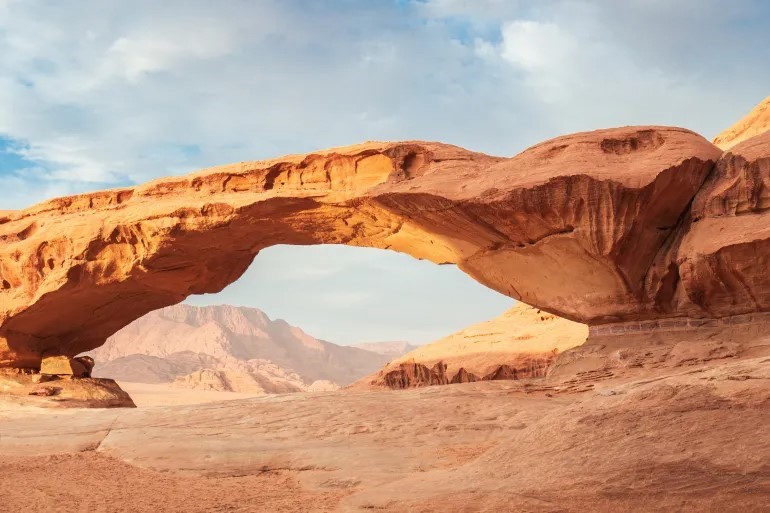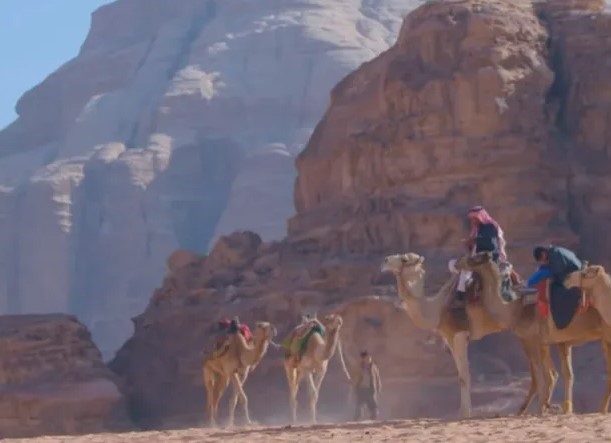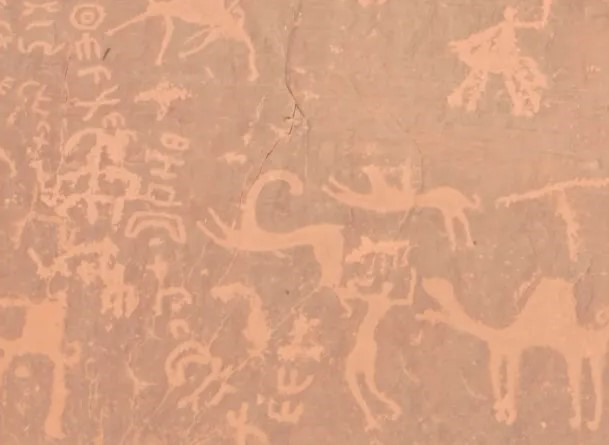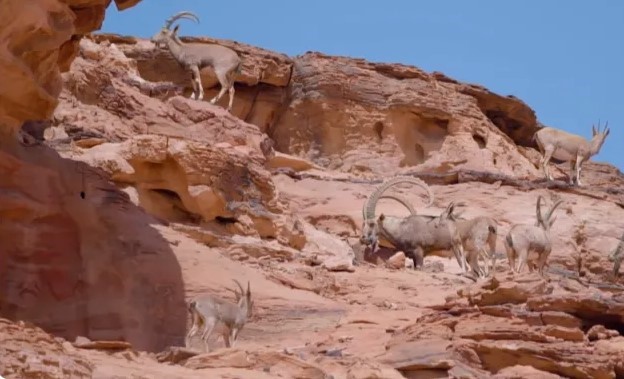If you were to land in this place, you might think you've traveled to space and landed on the surface of another planet. However, that's not the case. This is neither the moon nor Mars, but the location filmmakers turn to when they want to depict what appears to be the surface of Mars for their viewers.
اضافة اعلان
You are, in fact, in Wadi Rum, the stunning desert in southern Jordan, a popular destination for tourists and a frequent spot for filmmakers and photographers. Al Jazeera Documentary Channel featured a segment about it in their “Hallways” series.

It is a unique canvas of colors, ranging from white and yellow to red, brown, and even black. This breathtaking nature makes it an ideal environment for filming carefully selected scenes, particularly for global space-themed movies. One of the latest films shot here was The Martian.
Wadi Rum: A Natural Artwork on UNESCO’s World Heritage List

Wadi Rum, also known as the Valley of the Moon, is located in southern Jordan, approximately 300 kilometers south of the capital Amman and 70 kilometers north of the port city of Aqaba. It is said to be the land of the people of 'Ad, mentioned in the Quran as "Iram, the city of lofty pillars", though this statement isn't entirely accurate.

Geologists believe that this region formed around 500 million years ago, characterized by sandy rocks and black granite formations. These unique geological features and striking rock formations are why Wadi Rum was nominated for inclusion on UNESCO's World Heritage List, according to Nasser Al-Zouaideh, the director of Wadi Rum Protected Area.
The Legacy of Civilizations: Traces of Ancient Travelers

Wadi Rum has long been a route for trade caravans traveling from Yemen and the Arabian Peninsula towards the Levant. The peak of this trade activity occurred during the Nabatean Kingdom, which made the nearby Petra their capital.

Wadi Rum is rich in ancient ruins and inscriptions. It features a Nabatean temple with an altar and a water reservoir that is supplied via a channel extending to higher elevations in the area. It is believed that the peoples of 'Ad and Thamud once inhabited this region.

Some inscriptions on rocks suggest that the people of this region took pride in their tribal system and celebrated battles between different tribes. Other carvings indicate that they used branding to distinguish their camels—a practice still followed by many Bedouin communities today.

Wildlife: A Rich Ecosystem and Harsh Living Conditions
The Bedouins of Wadi Rum traditionally lived in homes woven from goat hair, a practice still maintained by a few. However, most have moved to cities, as life in the wilderness is tough and challenging, though it offers a sense of freedom and adventure.

In Wadi Rum, some Bedouins still reside in tents made of goat hair, but with the advancement of civilization, technology has entered the desert. They now travel by car instead of camels and use electric motors to churn milk and make butter and ghee, replacing the traditional "si'n", a leather pouch used for shaking milk.
Mohammad Al-Zouaideh, a local resident, explains that Wadi Rum is home to diverse wildlife, including the Arabian Oryx, known for its large eyes celebrated in poetry. The region is also rich in insects, reptiles, domestic animals, and wild predators. The wild goat, called "al-badan" by locals, lives in the high mountains.

Hunting Traditions: An Integral Part of Bedouin Heritage
In the past, the Bedouins of Wadi Rum hunted wild goats, partridges, and rabbits. Today, hunting is regulated by laws to protect endangered species, especially the Arabian Oryx, which disappeared from Jordan in the 1950s. However, a project to reintroduce the oryx began with ten animals in 2008, and their numbers have now increased to 70.

The Bedouins rely on camels for their endurance through thirst, hunger, and long distances. Camels are their companions throughout life, carrying their belongings, providing food and water, and being traded. Until recently, the people of Wadi Rum used camels to transport dairy products and hides to sell in Palestine and the Levant, using the proceeds to buy necessities like clothing, textiles, and goods for daily life. Today, camels are primarily used for tourism.
Wadi Rum Camps: A Chance for Tourists to Experience Bedouin Life
Wadi Rum is traversed by a railway line built by the Ottoman Empire to transport pilgrims from Istanbul to the Hejaz. Some sections of it are still visible.
Tour guide Mahmoud Al-Zouaideh notes that the 1963 film Lawrence of Arabia had a major influence on drawing attention to this tourist destination. People from all over the world now visit Wadi Rum to experience Bedouin life for several nights, just as they see it in movies. This includes activities like mountain climbing, contemplation, camel rides, motorsports, hot air balloon flights, sipping Arabic coffee, and experiencing the quiet of Bedouin nights, away from electricity and communication technologies.
A section of Wadi Rum has been designated for intensive tourism use, and its camps have been licensed. Camping is prohibited in other areas, while the majority of the area (520 square kilometers) remains a protected nature reserve to preserve its wildlife.
Desert Magic: The Joy of Connecting with Nature
Spanish tourist Marta Gomez Rodolfo, a journalist and writer, shares her love for Wadi Rum, saying, “I love Wadi Rum because I am in contact with Mother Nature. Sitting in the silence of the desert is one of the ways I connect with the universe, and with myself. In the city, we lose touch with nature, and my profession brings me stress and insomnia. But being surrounded by nature brings me peace and tranquility, recharging my energy to face life and the challenges of work again... it’s truly amazing.”
Composer Tarek Al-Nasser adds, "The beauty of the desert’s silence is that you hear the faintest sounds, all of which are natural music that pleases the ears. The serenity is not disturbed by city noise or human clamor. I’ve worked here on several series, including Al-Jawarih, The End of a Brave Man, King Farouk, and The Doors of the Clouds."
Al-Nasser recalls that the sound of wind flowing through narrow passages between the towering cliffs of Wadi Rum is one of the most beautiful musical compositions he's ever heard. It motivates him to create more. “Its towering heights make us feel small, pushing us to elevate the level of our work. Visiting Wadi Rum gives me greater ambition every time.”
The Bedouin has adapted to desert life and endured its hardships. In return, the desert has given him its hidden treasures and taught him to preserve the environment instinctively. Despite some modern elements invading the desert, like communication devices, cars, and television, the Bedouin remains deeply attached to the desert, holding on to his customs and traditions.



